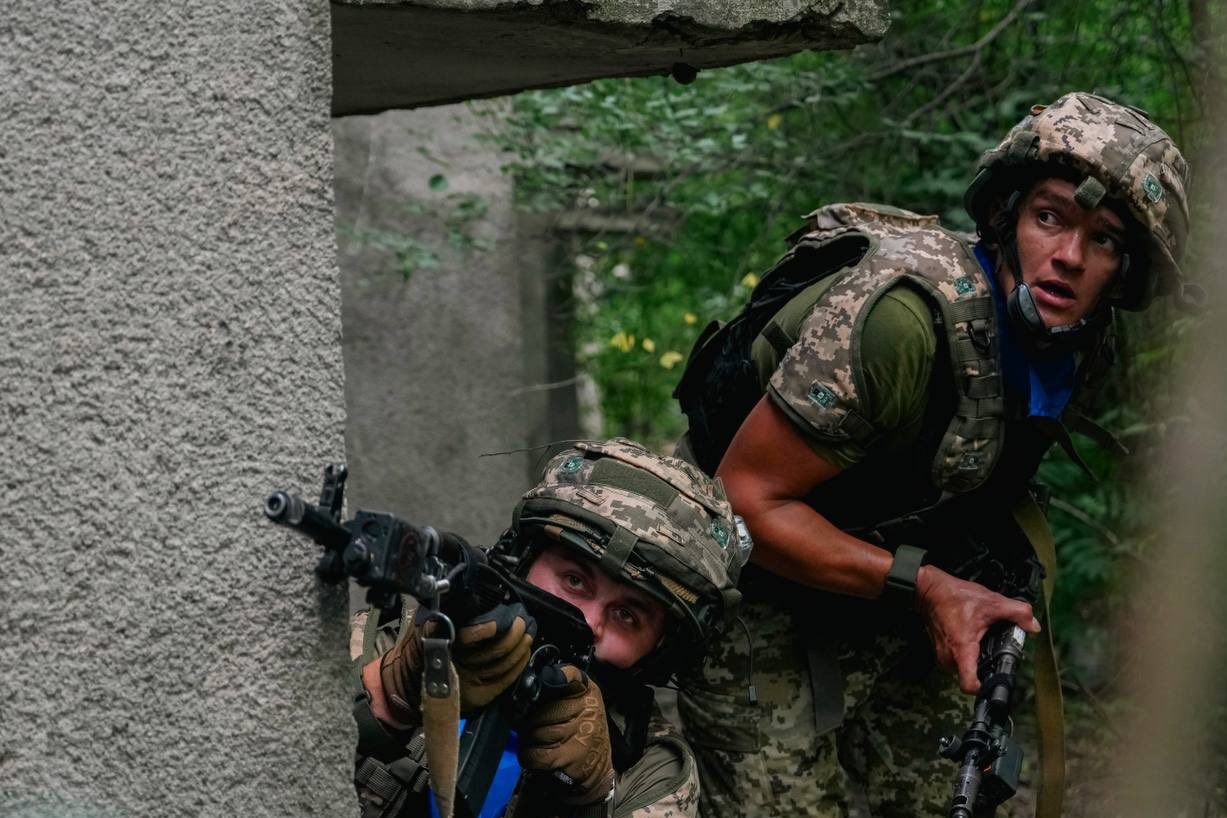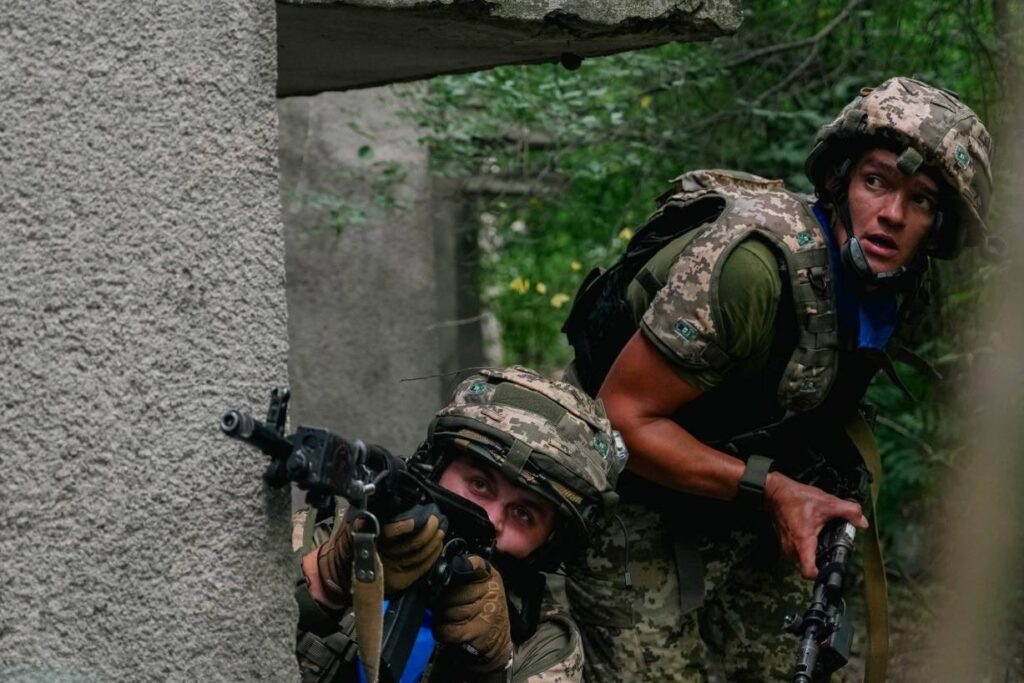In the early days of the Ukrainian advance into Russia’s Kursk region, Daniel Fried of the Atlantic Council compared Ukraine’s bold maneuver to George Washington’s historic raid across the Delaware River. Given the intelligence available at the time and the perceived objectives, the comparison was apt. But now that the operation is nearly six weeks in, it has become clear that this advance is not just a raid – a military operation characterized by a temporary seizure of territory and a planned withdrawal. Ukraine has had several opportunities to withdraw, but it remains engaged.
At this point, another historical analogy can provide some insight: the Battle of Gettysburg.
After more than two years of grueling conflict, Russia seems content to wear down Ukraine through a war of attrition. But Ukraine understands that it cannot sustain a prolonged conflict because of its more limited resources, smaller population, and lack of naval power. On August 6, Ukrainian forces, taking advantage of operational security and other low-tech tactics, launched a daring offensive, advancing north from eastern Ukraine into Russian territory.
This offensive is not a conventional raid, and Ukraine cannot realistically intend to permanently annex Russian territory or expand the operation much further. Instead, it increasingly appears that the goals are to disrupt Russian military logistics, force a strategic realignment, demoralize the Kremlin, undermine support within Russia, improve prospects for international aid, and gain influence – goals strikingly similar to those pursued by the Confederacy in its ill-fated Gettysburg campaign.
In 1863, the Confederacy faced a dilemma similar to that of Ukraine. After years of war, it was clear to Confederate leaders that the Union’s larger population, industrial capacity, and naval superiority would inevitably wear them down. Seeking to seize the initiative and change the course of the war, the South launched a bold offensive into northern territory, seeking to win a decisive battle that could demoralize the North, undermine domestic support, improve prospects for international aid, and create an advantage for negotiating an acceptable peace settlement. In June 1863, General Robert E. Lee’s Army of Northern Virginia began the Gettysburg Campaign by advancing north from central Virginia. Using the Shenandoah Valley as a natural corridor, Lee’s troops shielded their movements from Union observation. They crossed the Potomac River into Maryland, marched into southern Pennsylvania and clashed with the Union at Gettysburg.
Confederate goals at Gettysburg
- Political implications: A triumph on Union soil could have demoralized the North, increased pressure on President Abraham Lincoln, given power to the Peace Democrats (also known as Copperheads), and potentially changed the political landscape of the war.
- International recognition: The South hoped that success could persuade Britain and France to recognize the Confederacy.
- Other military campaigns: A victory could have paved the way for further Confederate offensives and forced the Union to expand its defenses and rethink its strategic goals.
- Impact on morale and military strategy: A Confederate victory could have shattered Union morale and led to significant changes in leadership and military tactics – a reflection of the turmoil the Union had experienced throughout the war.
- Negotiation levers: The occupation of northern territories might have given the South additional influence in the peace talks.
Strategic parallels and possible targets in Ukraine
- Political implications: A decisive victory for Ukraine, coupled with an embarrassment for Russia, could demoralise the Russian armed forces, boost Ukrainian morale, increase domestic and international pressure on the Russian leadership, and strengthen Ukraine’s influence in negotiations or possible peace talks.
- International recognition: A success on Russian soil could increase international support for Ukraine and lead to continued military and economic aid, while further isolating Russia diplomatically. In the short term, it could also lead to a reconsideration of restrictions on the use of foreign weapons on Russian territory, thus strengthening Ukraine’s operational capabilities.
- Other military campaigns: A Ukrainian success could force Russia to redeploy some of its troops. This would limit Russia’s ability to advance into Donbass and potentially give Ukraine time and space to strengthen its defensive position in the region.
- Impact on morale and military strategy: Major victories for Ukraine could significantly strengthen national unity and morale, encourage volunteerism and lead to greater international support.
- Bringing the fight to Russia: While early successes could strengthen Ukraine’s position, they could also force the Kremlin to allocate resources to another front, further weakening popular support and giving Ukraine additional leverage.
Just as the Confederacy sought to turn the tide of the war with a daring invasion, Ukraine appears to have pursued a similar strategy to change the dynamics of its conflict. According to the commander-in-chief of the Ukrainian Armed Forces, Oleksandr Syrsky, Ukraine’s advance has so far secured over a thousand square kilometers of Russian territory – a success that could give Ukraine a decisive strategic advantage.
There are, however, notable differences between the two campaigns. For the first time since World War II, a foreign force occupies Russian territory, giving Ukraine a chance to consolidate its gains, strengthen its defenses, and prepare for future operations – advantages Lee never had. Ukraine has so far avoided significant tactical missteps such as Pickett’s Charge. More strategically important, Russia has refrained from making the Kursk region decisive, given Putin’s reluctance to launch a full-scale counteroffensive as the Union did at Gettysburg.
Despite Ukraine’s successes at Kursk to date, its situation remains precarious. The resources invested in this incursion are significant, and if Russia’s response remains limited, Ukrainian forces could be more effectively deployed elsewhere. Moreover, an encirclement or defeat of Ukrainian forces at Kursk could ultimately be as disastrous for Ukraine as Lee’s defeat at Gettysburg was for the Confederacy. The complexities of modern warfare, combined with the unique challenges of this conflict, make such scenarios plausible. Any political gains must now be held by Ukraine’s generals. These generals now face critical decisions: hold the area, withdraw and strike elsewhere, or strategically redeploy their forces.
The invasion of Ukraine has already changed the dynamics of the war and offers Ukraine an opportunity to regain some momentum. This operation has forced both sides to rethink their priorities, strategies, and tactics. For those seeking to understand the broader implications, looking at the invasion through the lens of Gettysburg can provide a relevant framework for interpreting Ukraine’s motivations, potential consequences, and long-term strategic goals.
Lieutenant Colonel Gregg F. Curley is a U.S. Marine Corps Fellow at the Atlantic Council’s Scowcroft Center for Strategy and Security for 2024-2025.
Further reading
Image: Ukraine.- In these photos, members of the Ukrainian armed forces are stationed in the border area in the conflict with Russia on August 12, 2024. More than 76,000 people have been evacuated from the border areas with Ukraine in Russia’s Kursk region, the local emergency management ministry reported, after Ukraine invaded the region this week. Handout / Latin America News Agency via Reuters Connect.






:max_bytes(150000):strip_icc():focal(726x199:728x201)/Lady-Gaga-Michael-Polansky-Venice-Film-Festival-090424-tout-ec8b5b4a130d4398b28fce59cfb7d5da.jpg)